Downtown Raleigh’s Historic Oakwood section is home to 18th and 19th Century families, houses, tombs and memories. I cover several blocks centered through North Person Street and feature the remains of a large plantation, stately homes and a centuries old cemetery. It is an easy walk and a wonderful way to spend a few leisurely morning or afternoon hours.
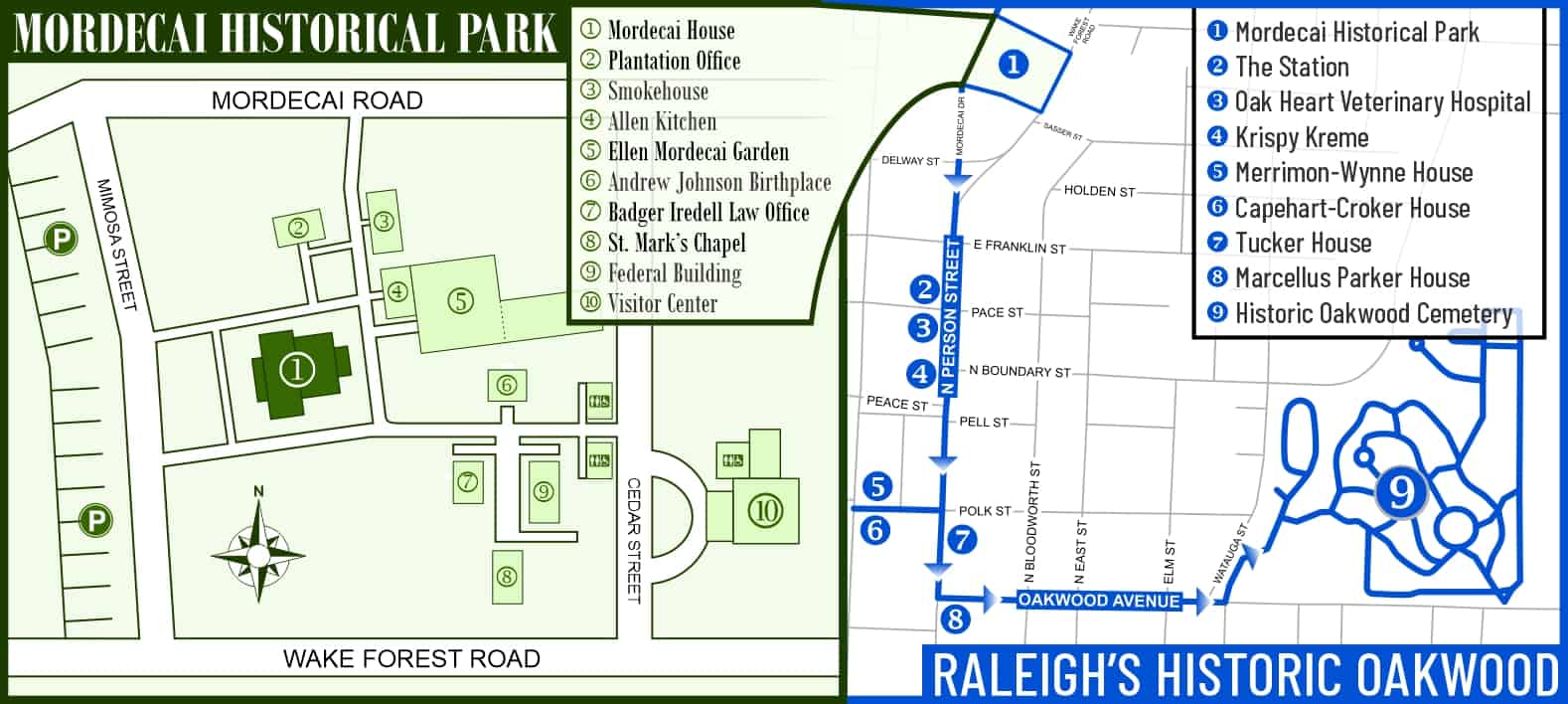
We begin the journey at the Mordecai Historical Park, walk our way along historic North Person Street (with a few little detours), visit the Historic Oakwood Cemetery then work our way back to the park.
Jump to a specific section.
Mordecai Historical Park
The Mordecai Historic Park is the most well known section of Raleigh’s Historic Oakwood and the oldest home still sitting on its original location in the city. It was once a 2,000-acre (809 ha) plantation, the largest in all of Wake County. The home was built in 1785 but didn’t get its name until 1817 when Moses Mordecai, from a prominent Jewish family based in Warrenton, North Carolina, married Peggy Lane and made the home their permanent residence. The original owner, Joel Lane, is best known for being the original owner of much of the land that now comprises Raleigh, North Carolina.
Mordecai House
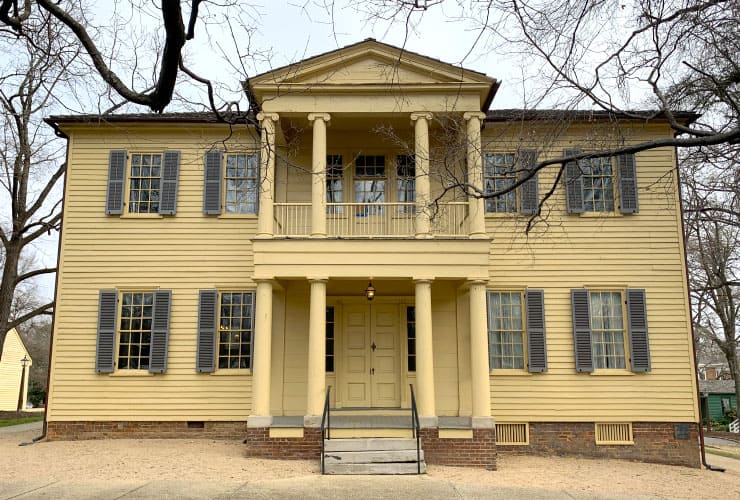
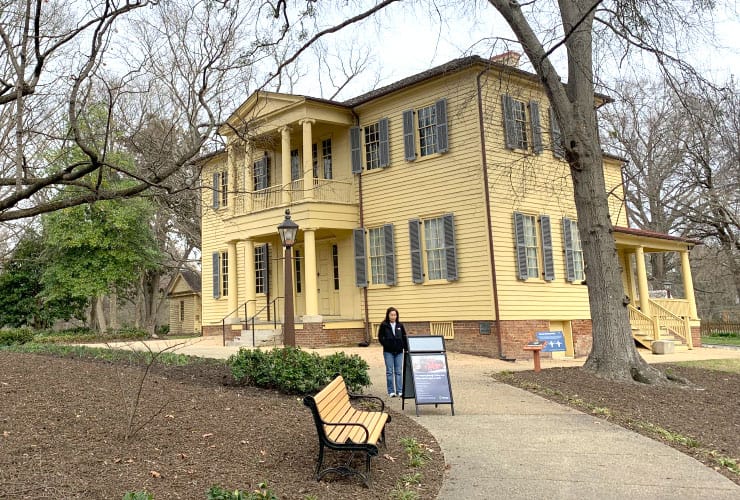
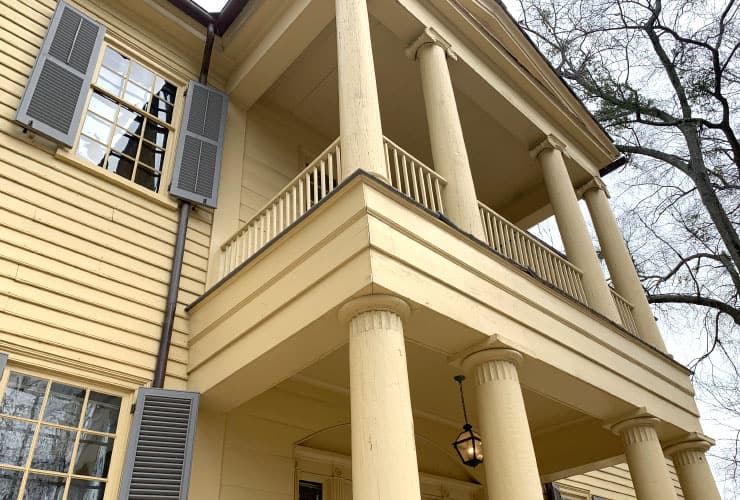
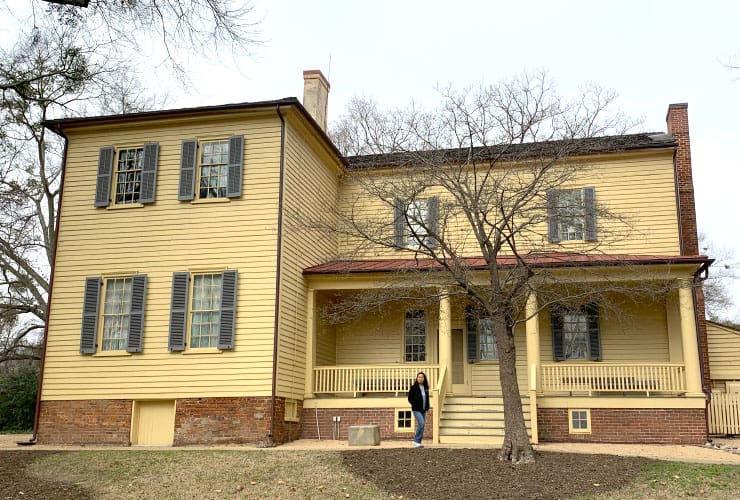
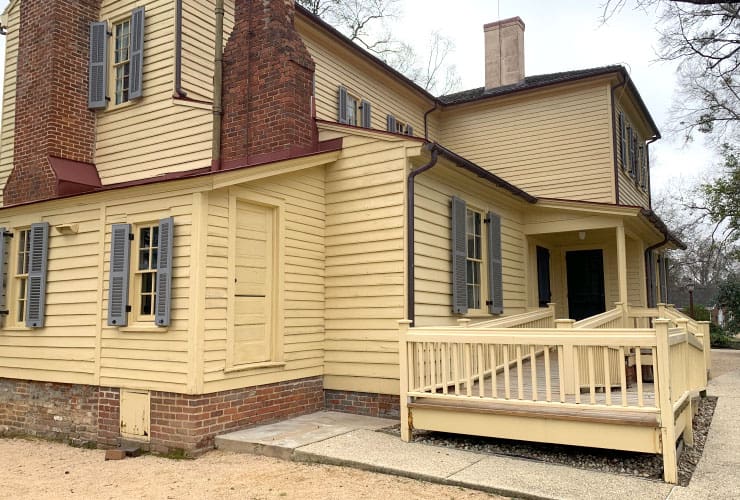
The main house was built in 1785, by Joel Lane as a wedding present for his son and new bride. After several generations a local architect was commissioned to expand the home transforming it into the Neo-Classical home seen today. Patty Mordecai became the matriarch of the home living in it for all of her 89 years until her death in 1949. Over that time she sold off significant portions of the land investing the proceeds into the development of local neighborhoods. The last family member to actually live in the house was Burke Haywood Little, the youngest nephew of Miss Patty. When he passed in 1968 the home was sold to the City of Raleigh for $60,000.
Plantation Office - Ellen Mordecai Garden - Allen Kitchen
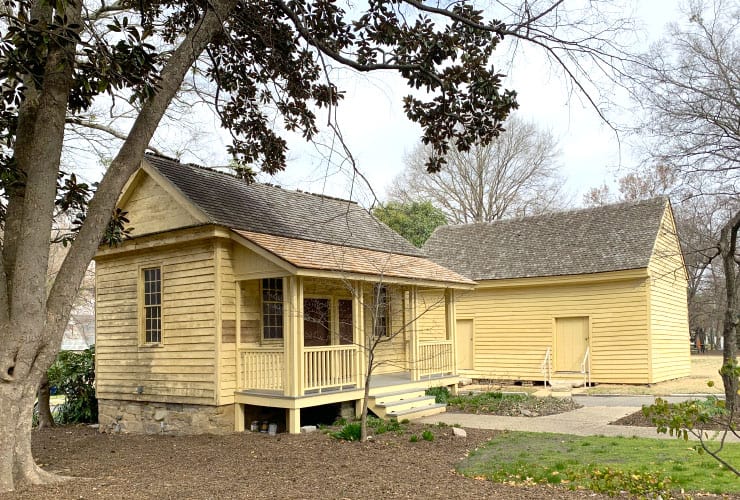
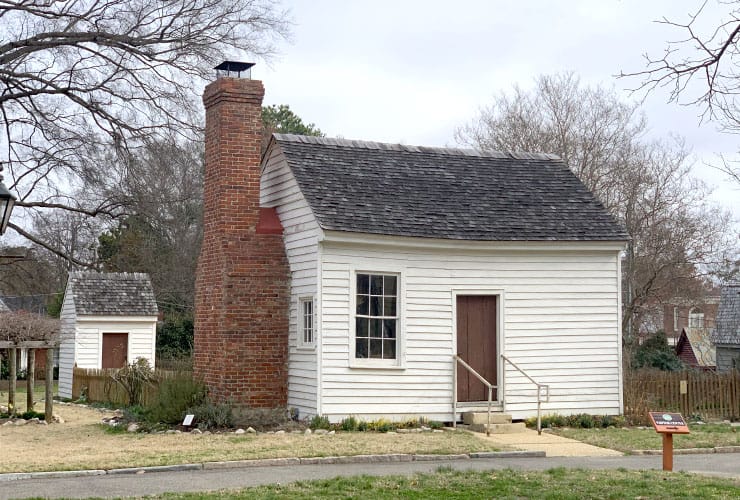
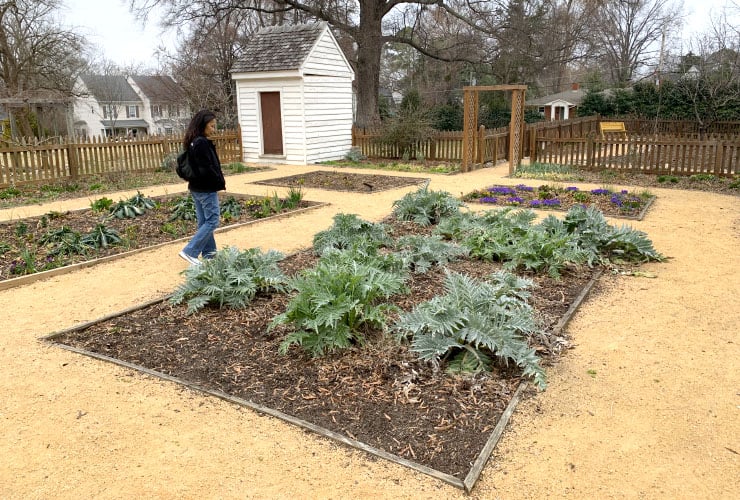
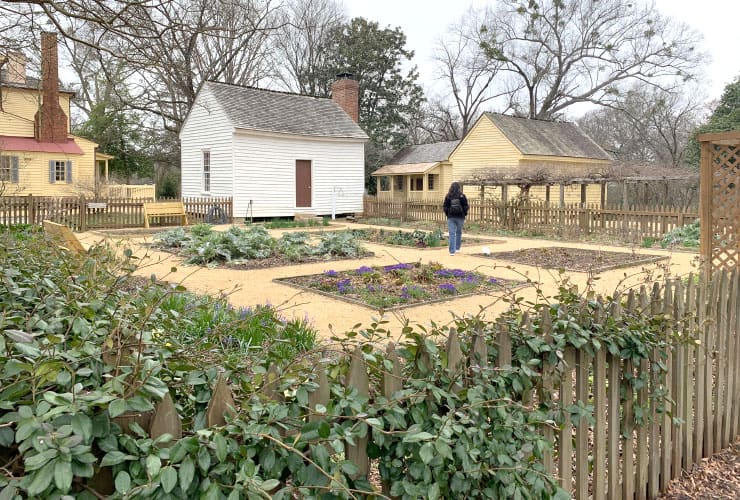
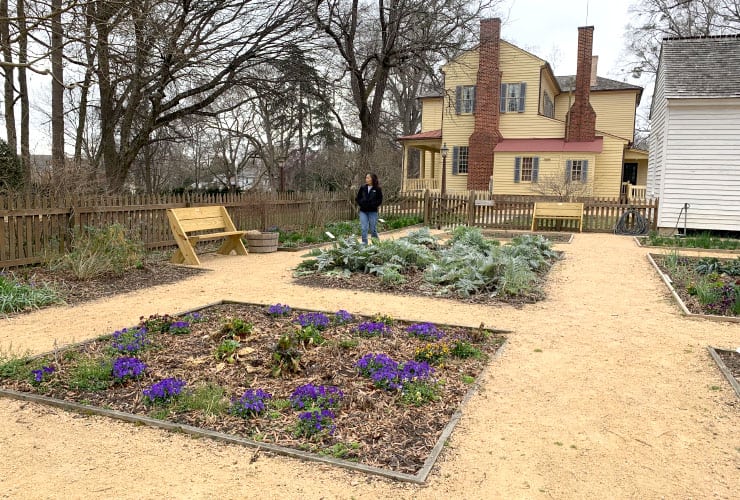
Behind the main house were the Plantation office, the smokehouse and kitchen. The smokehouse served the vital role of storing the plantation’s food. Through the process of smoking then curing with salt, food could be stored for up to a year at a time. This was particularly useful during the difficult winter months. The Allen Kitchen sits where the original Mordecai kitchen sat. Interesting to note that exterior kitchens were commonly built away from the main house due to the excessive amounts of heat the fires generated. Behind the kitchen is the Ellen Mordecai Garden, a recreation based on Ellen Mordecai’s first-hand descriptions from her book, Gleanings from Long Ago.
Andrew Johnson Birthplace
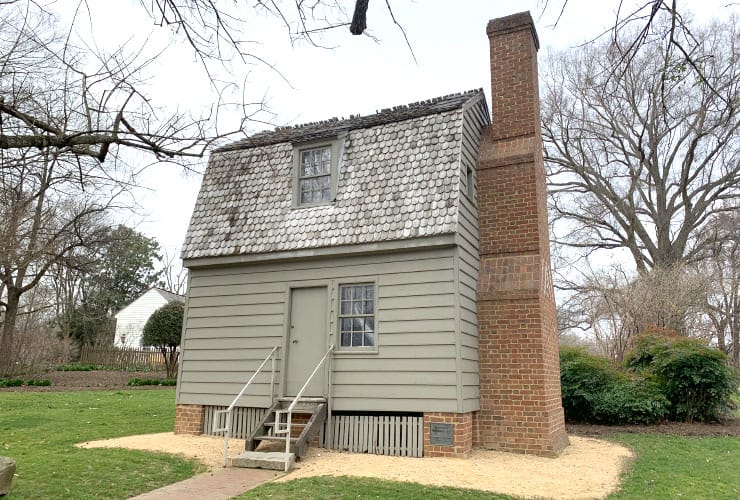
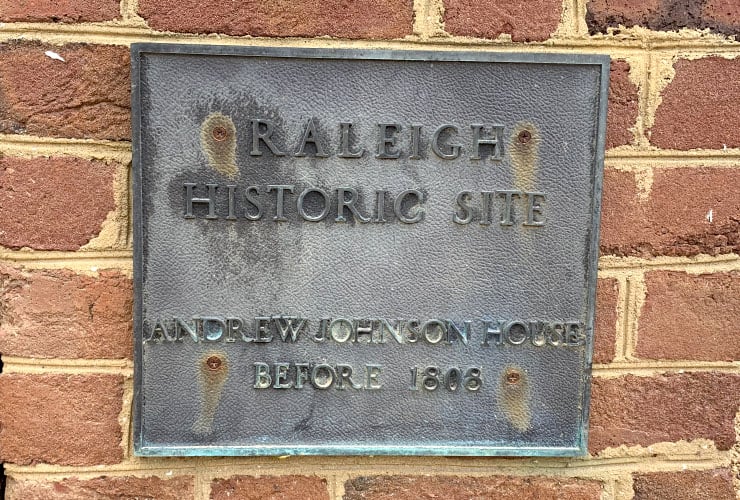
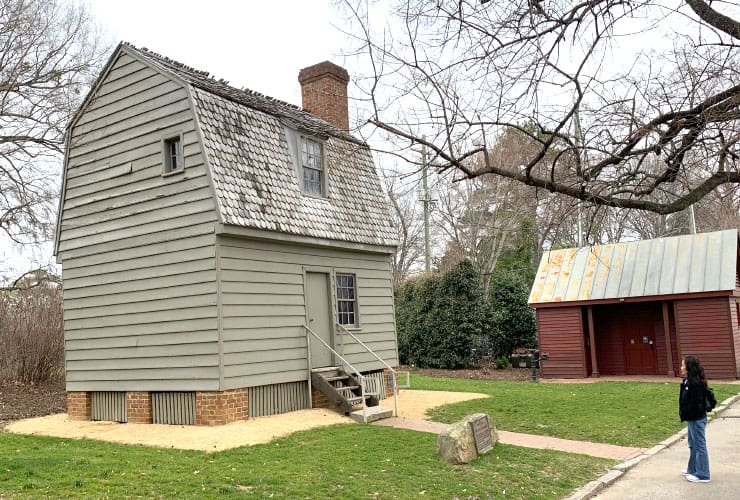
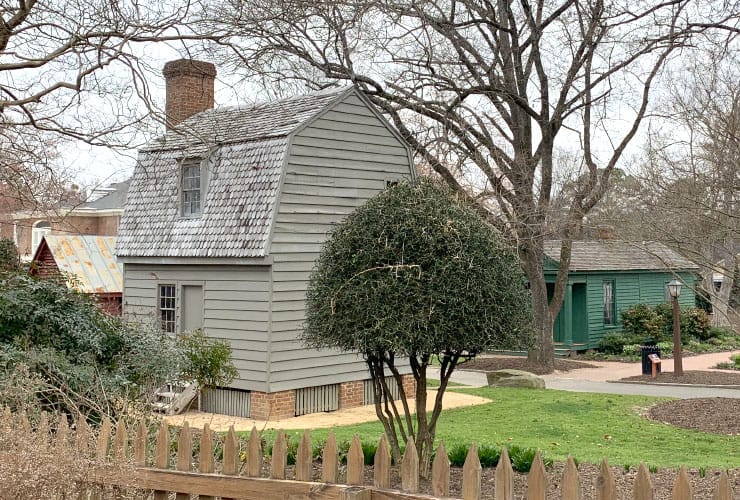
Andrew Johnson was the 17th President of the United States and, honestly, is still considered one of the nation’s worst leaders. He inherited the office upon Abraham Lincoln’s assassination and proceeded to hinder his predecessor’s reconstruction vision laying the foundation for generations of struggles for the newly freed slaves. His birthplace was originally on Fayetteville Street in downtown Raleigh and has been moved four different times eventually settling here in 1975. Though only 15 of the original boards still remain, with the assistance of Beth Crabtree and the Wake County Bar Association, the home was restored to its original 1790 state.
Badger Iredell Law Office - St. Mark's Chapel - Federal Building
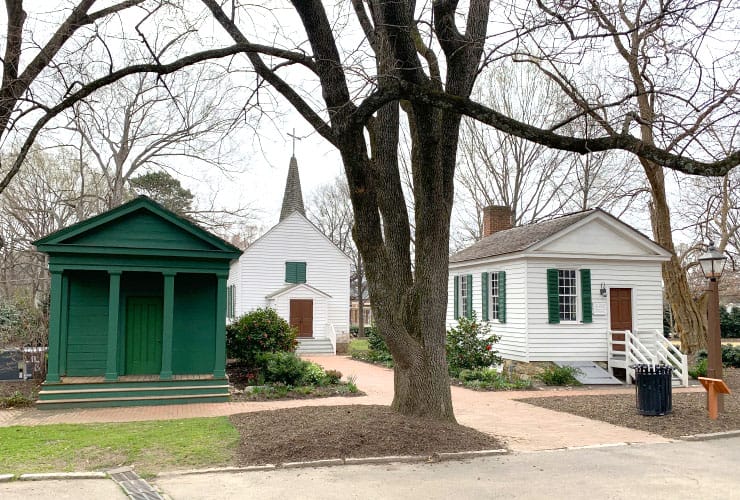
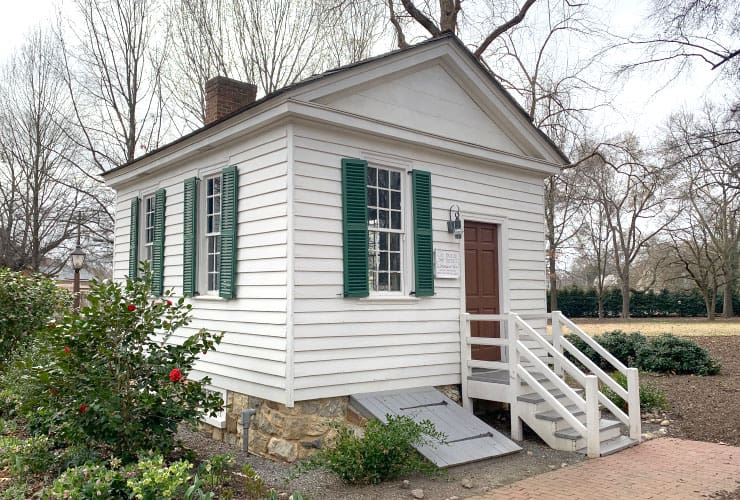
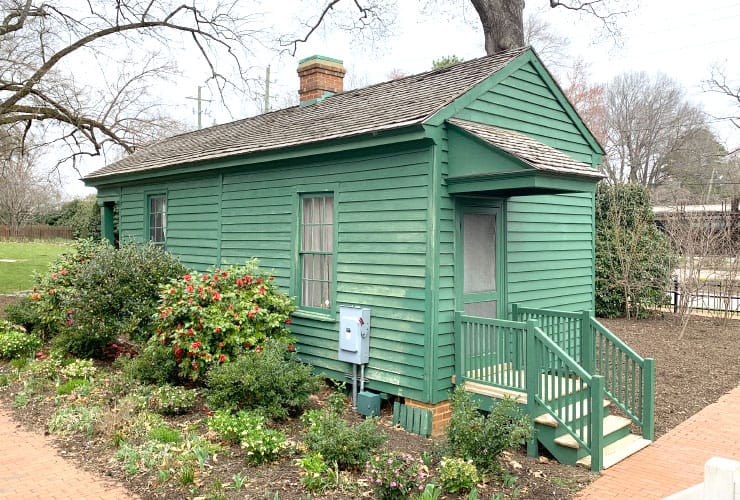
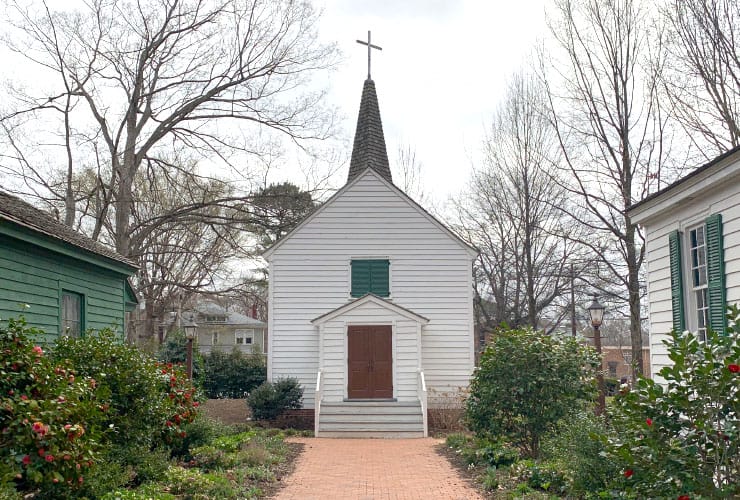
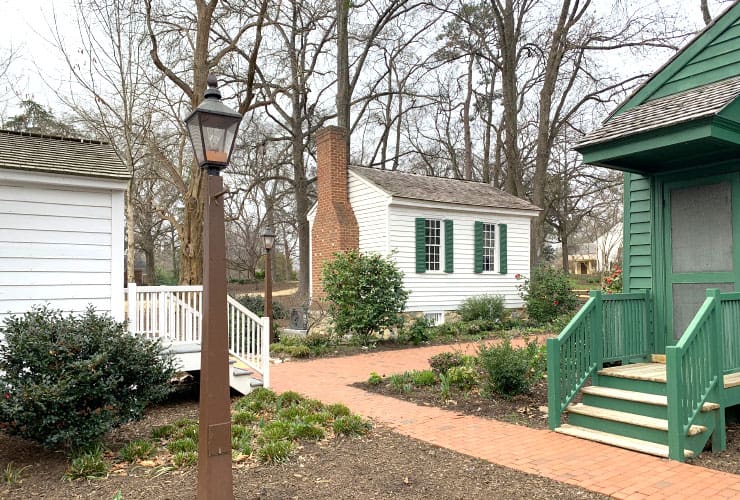
At the east end of the park are three buildings that were moved, along with the Johnson birthplace, in the late 1970’s. The Badger-Iredell Law Office is the oldest, built in 1810, and initially served as law office for future US Senator George Badger. Upon his ascension to that office he sold the property to James Iredell who subsequently became North Carolina’s 23rd Governor and later a US Senator as well. The Federal Building’s use is somewhat less clear but it is believed to have once served as a local post office. The St. Mark’s Chapel was built in 1847 near Gulf, North Carolina. The Episcopal chapel was a private place of worship for the family and their slaves, albeit in a segregated gallery.
Mordecai Historical Park Visitor Center
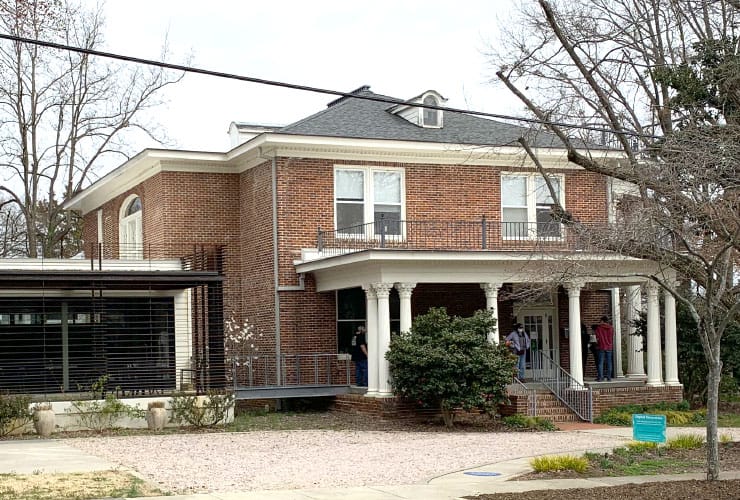
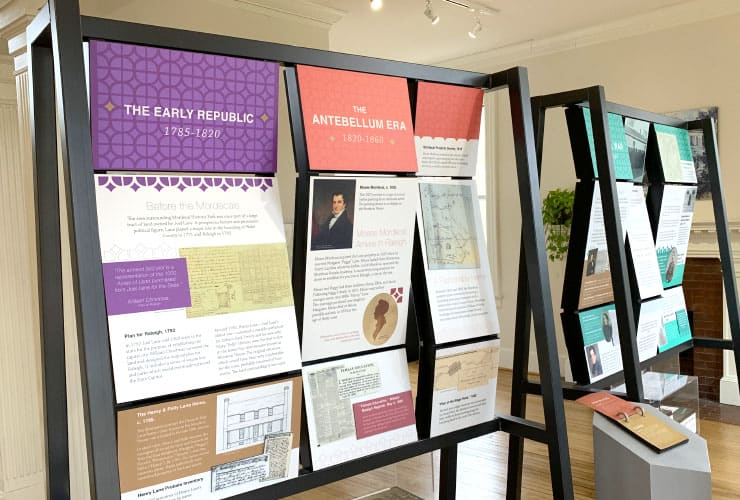
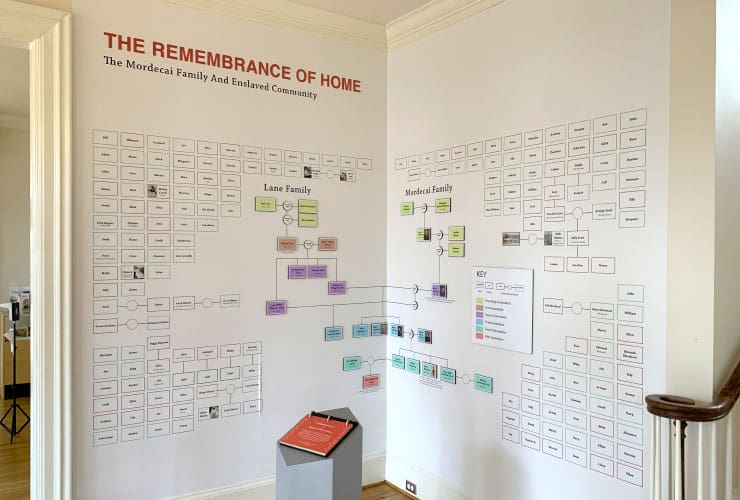
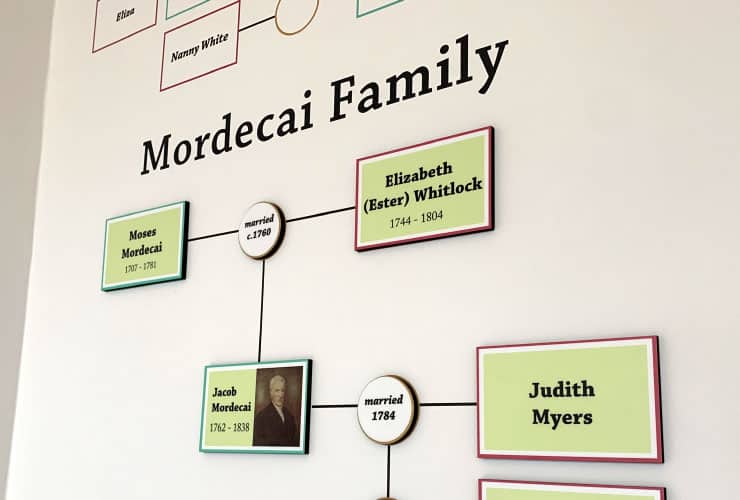
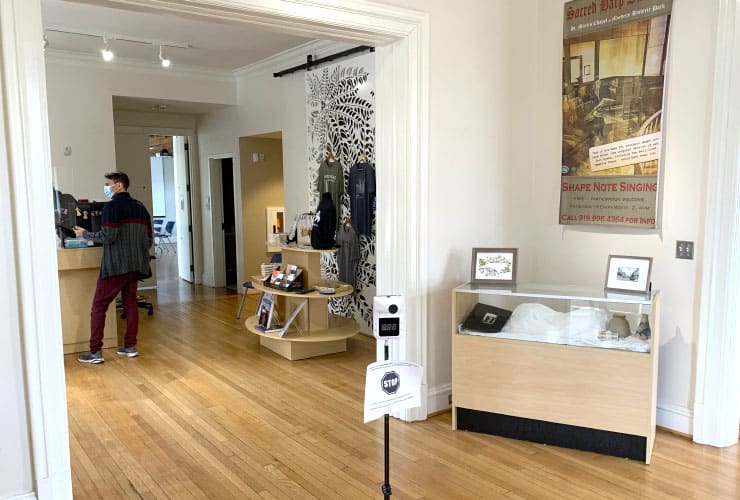
Across the street from the park is a Visitor Center that contains lots of interesting materials about the park, the city of Raleigh and includes a small gift shop. There are several exhibits displaying the history and mementos of the Mordecai and Lane families stepping through the centuries from the early Republic, slavery, the Civil War, reconstruction and into the 20th Century. There’s even a family tree that includes both the Mordecai and Lane families and the enslaved workers as well. Guided tours are available daily beginning at 10 am through 3 pm, each tour lasting about 50 minutes.
Historic Oakwood District
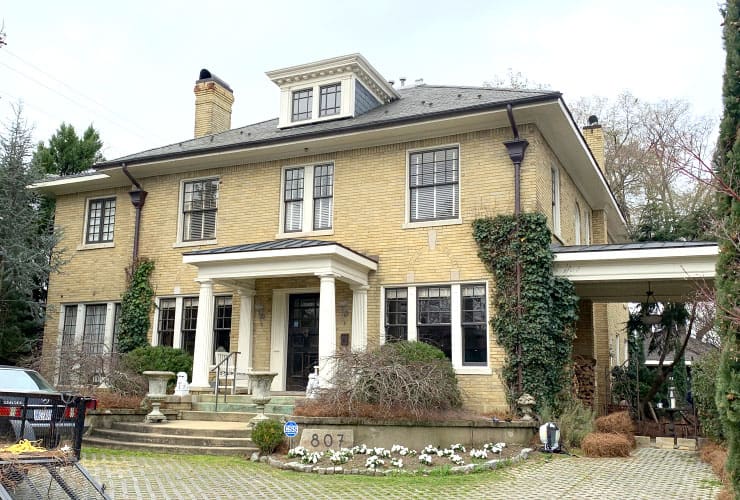
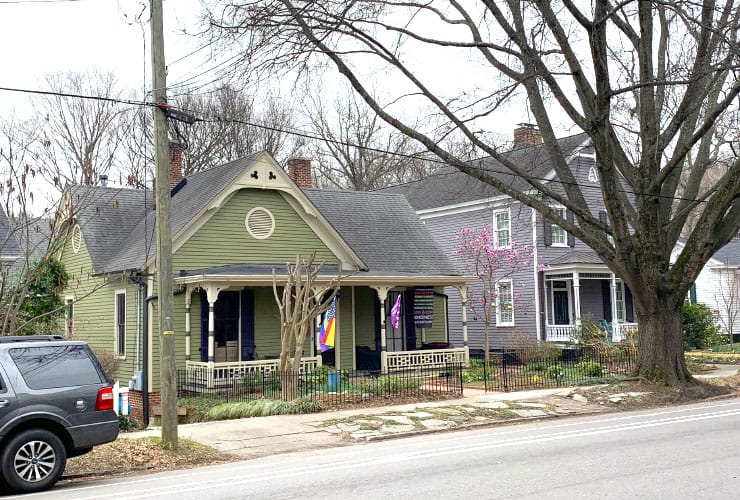
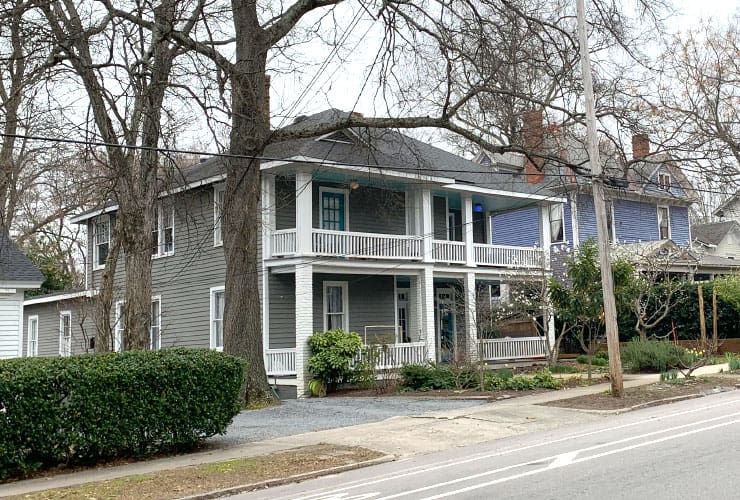
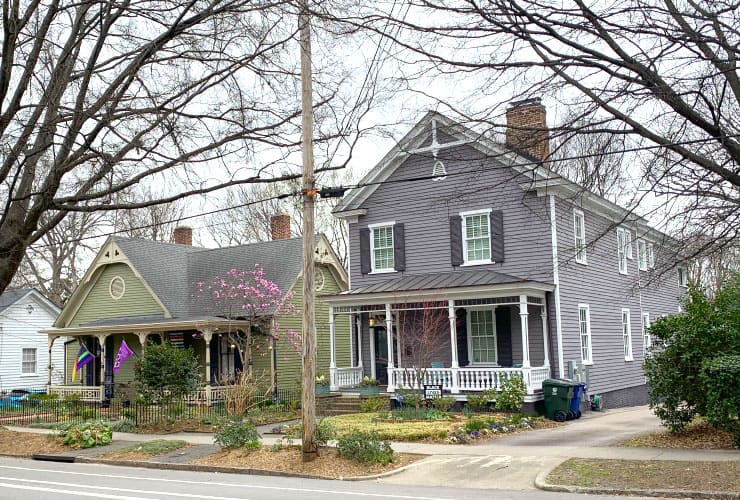
Our walk towards the Historic Oakwood Cemetery took us down North Person Street through Raleigh’s Historic Oakwood district. The street is filled with beautiful homes all built after the Civil War for some of the more prominent members of Raleigh society. Though different architectural styles are present the most common is the North Carolina Victorian style known for its sawn work detailing expansive wrap-around porches. By the 1970’s many of the homes were experiencing neglect and facing possible demolition. Local activists fought passionately and ultimately persevered leading to Oakwood being listed on the National Register of Historic Places in 1974.
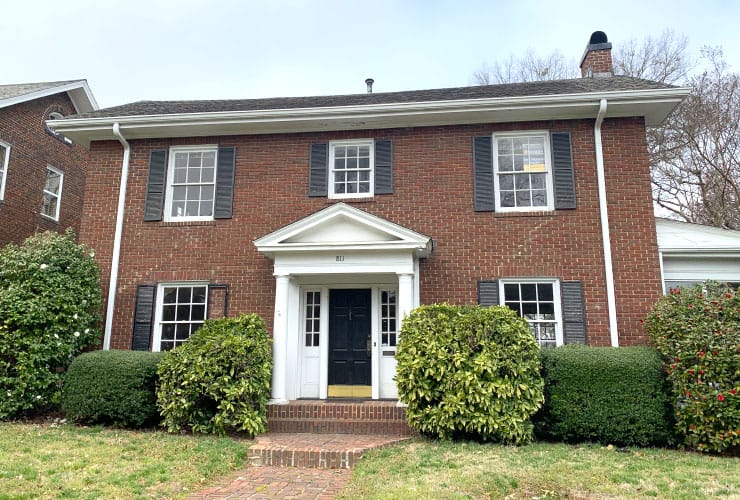
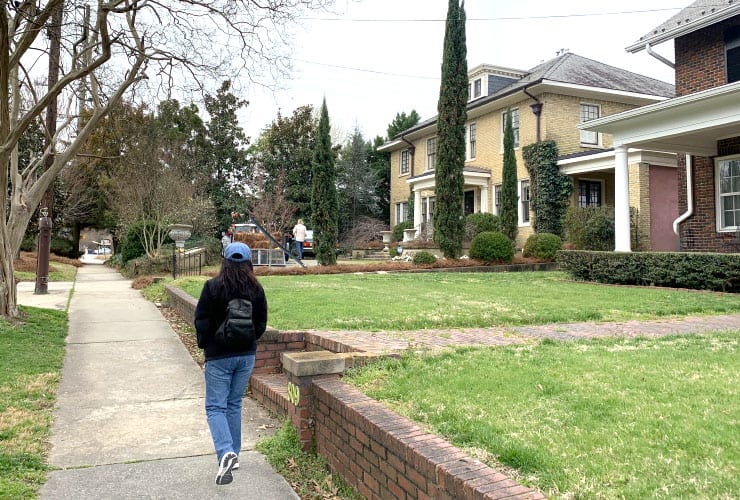
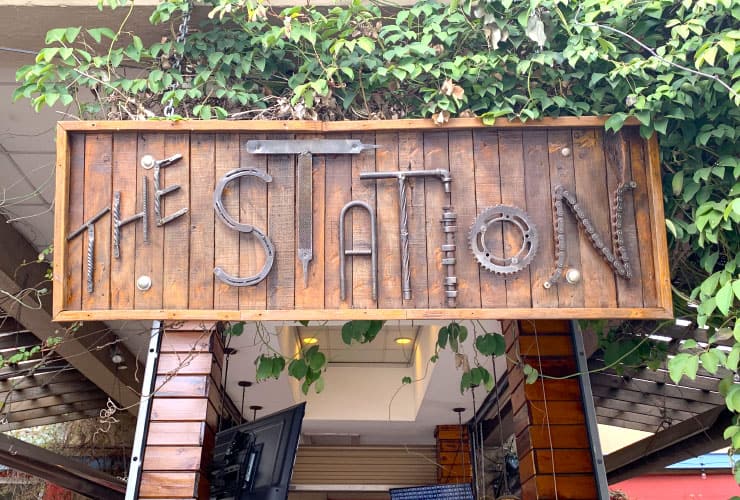
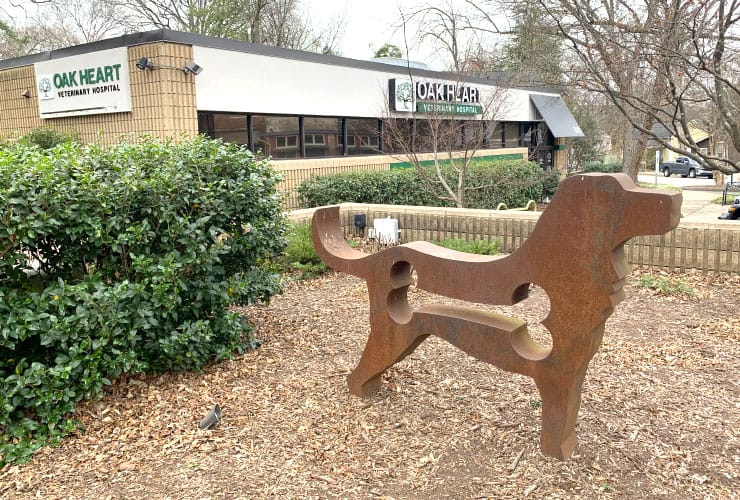
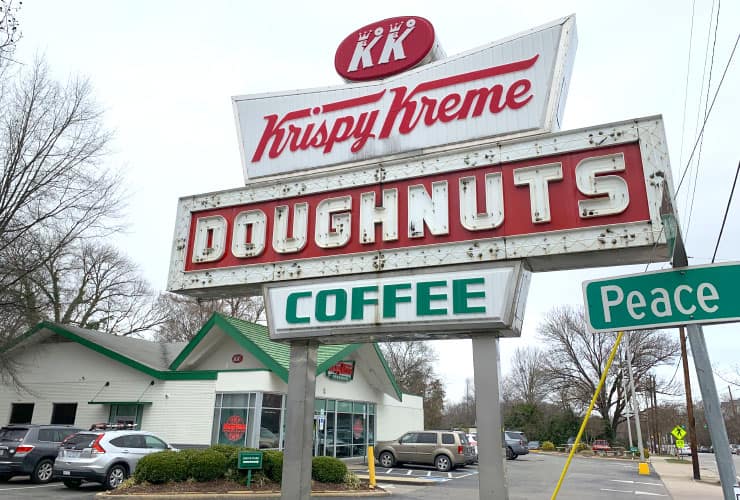
As you proceed down North Person you’ll see an eclectic mix of old, new and unique structures. There are early 20th Century brick homes and stately manors. The Station at Person Street features such a cool sign that popping in for a drink or a bite is almost mandatory. Make sure not to miss the clever bronze dog in front of the Oak Heart Veterinary Hospital. Further down the block is a large Krispy Kreme with a good old-fashioned, and quite large, marquis sign that lights up the street corner.
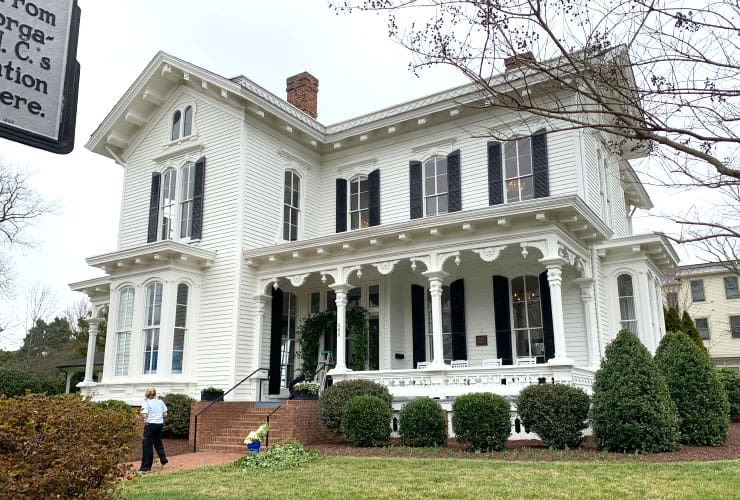
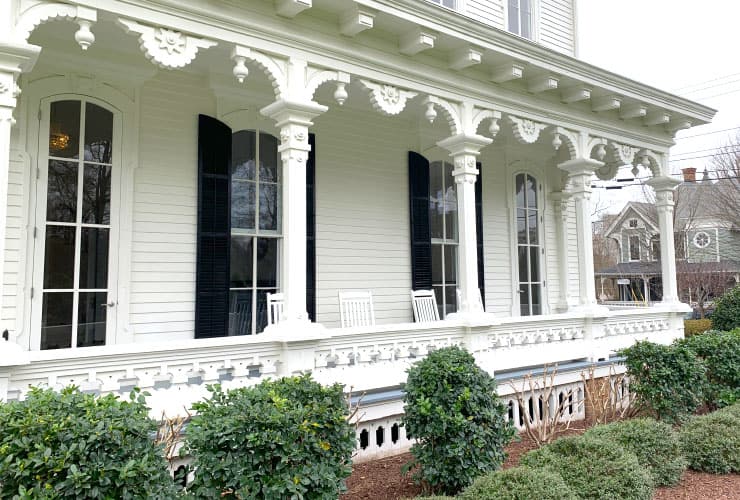
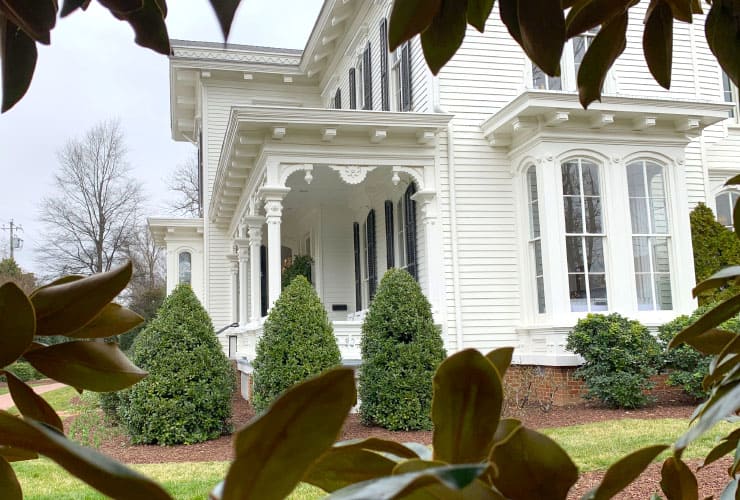
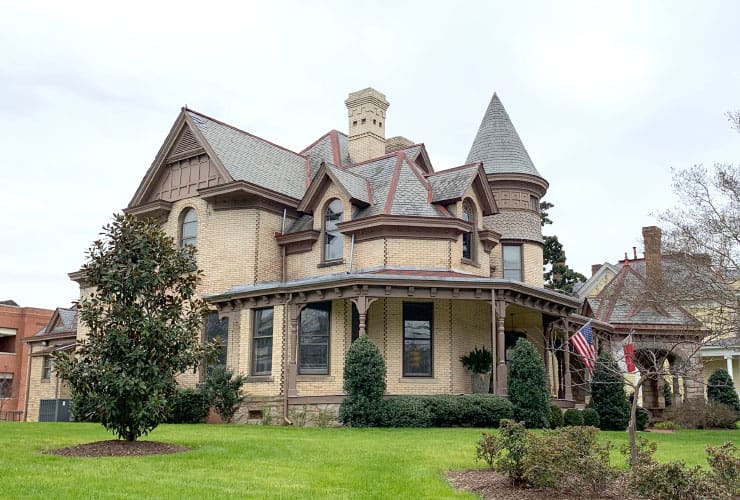
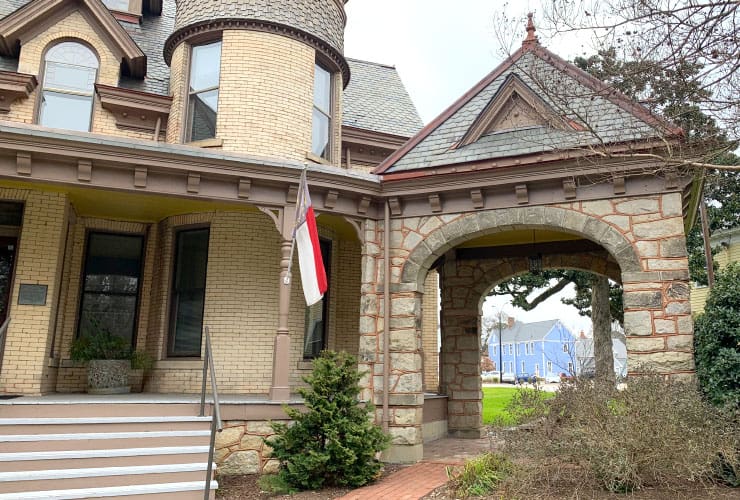
The more well-known homes include the Merrimon-Wynne house. It’s just a short walk west down Polk Street and is host to many events including weddings and reunions. Across the street is the Capehart-Croker House, built in 1898, which today serves as a government building, that is one of the best-preserved examples of the Queen Anne style in Raleigh.
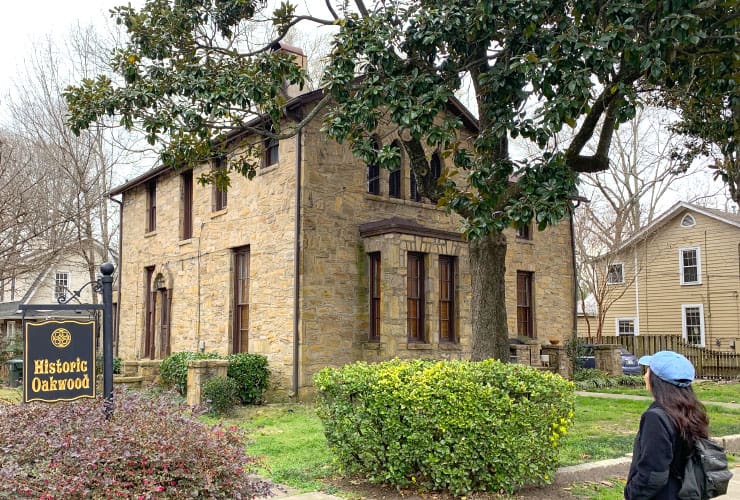
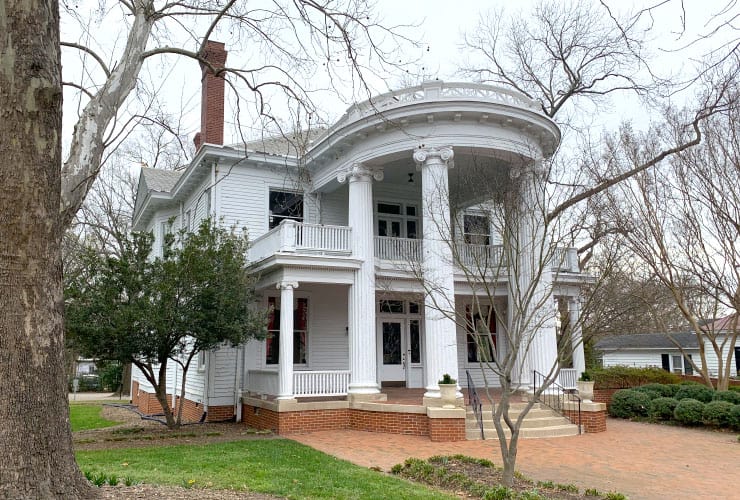
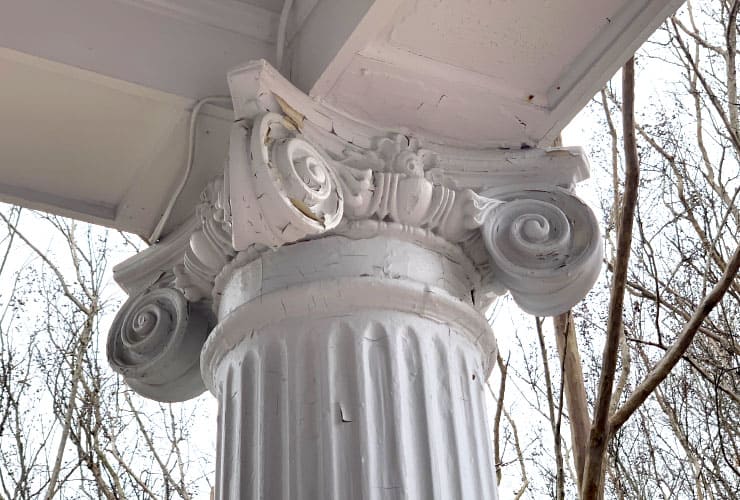
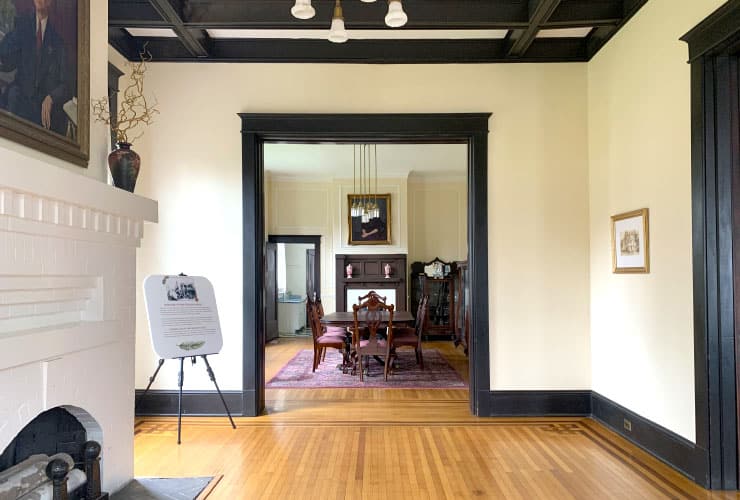
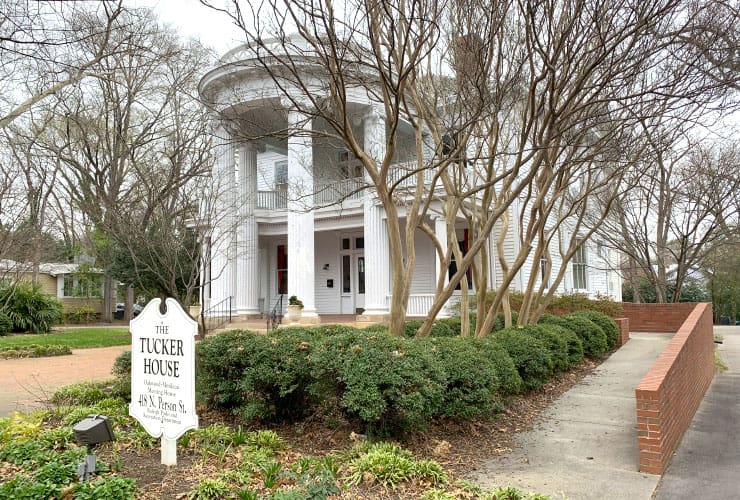
On the corner of Polk and North Person is a beautiful 2-story sandstone home that, at first glance, appears to be a Medieval church but instead is a private residence. The crown gem of Historic Oakwood is the Tucker House with its wide brick entrance and towering columns. Built in 1917 with a Neo-Classical Revival style, the Tucker House was a home ahead of its time. It featured three indoor bathrooms, a telephone room, a radio room to go along with four fireplaces, five bedrooms and even an upstairs sleeping porch. The home survived a massive fire in the 1930’s and was eventually relocated from just down the street in 1975. Today the house can be booked for weddings, receptions, conferences and similar private events.
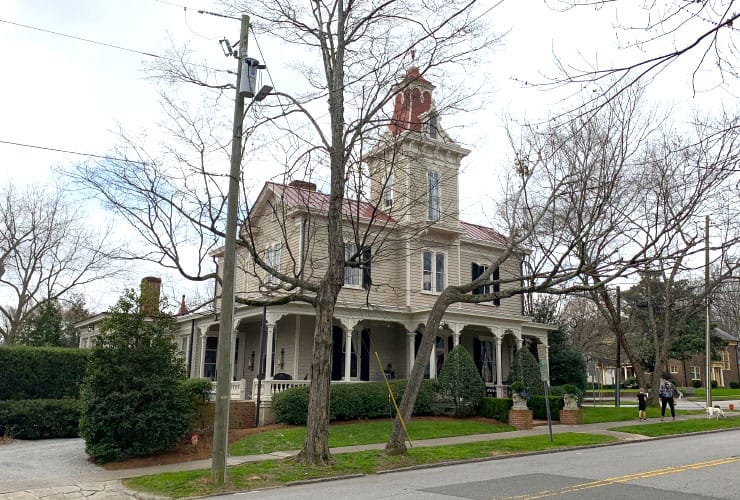
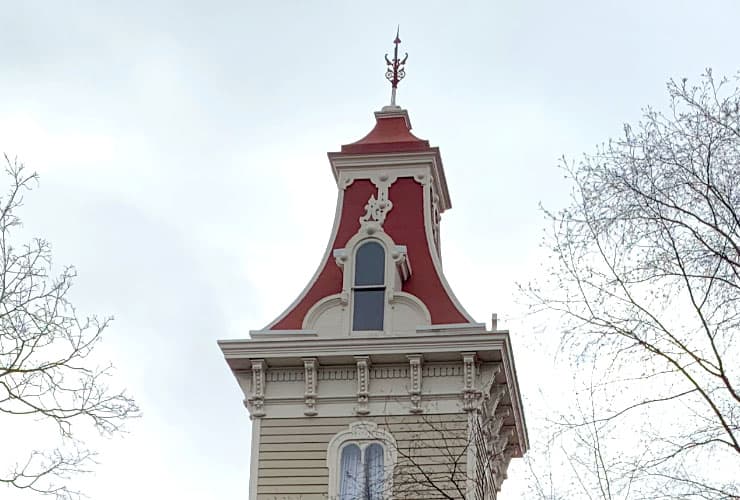
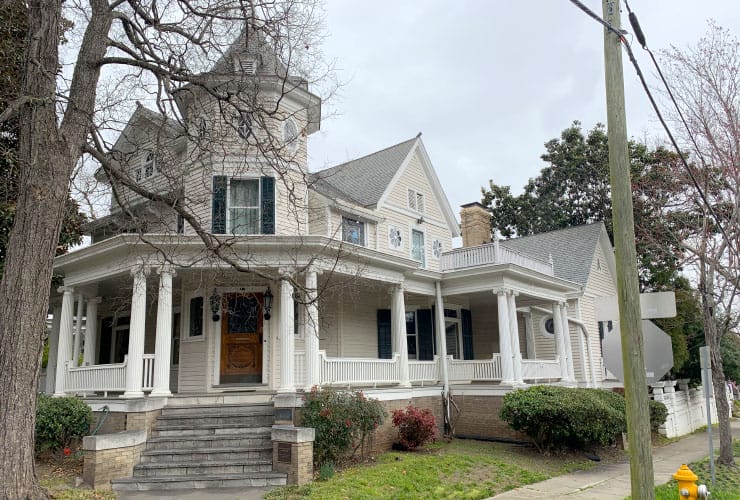
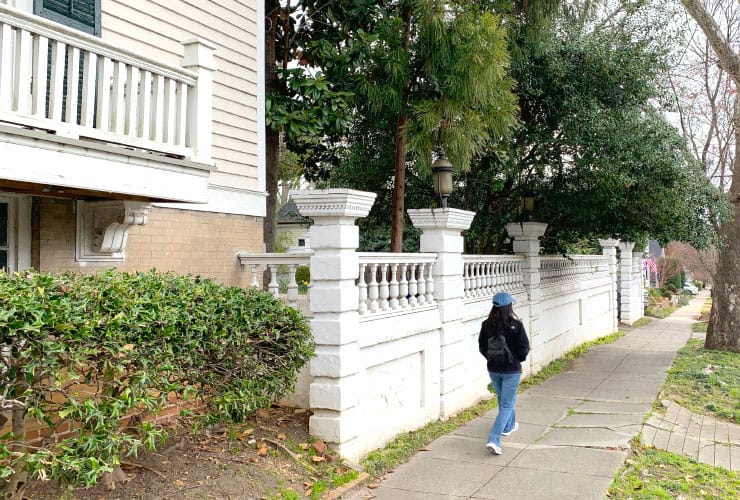
As you turn east on Oakwood Avenue the homes continue to impress. Some are opulent while others are uniquely eclectic. Of note is the Marcellus Parker House, built in 1879 in the Italianate style, featuring chamfered porch posts, a wrap-around porch and an iron finial atop an ornate mansard roof. Across the street is a beautiful white Victorian style home with a hand-carved wooden door framed by two gaslight lanterns. The wrap-around porch is accentuated by a second floor outdoor patio and a whitestone fence surrounding the south border.
Historic Oakwood Cemetery
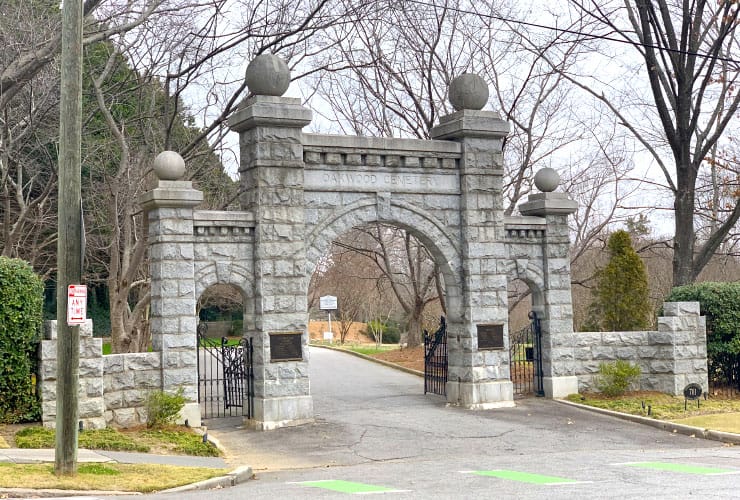
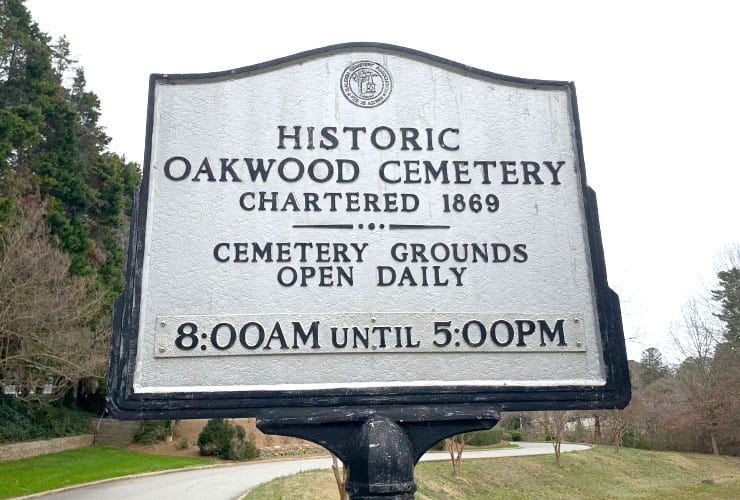

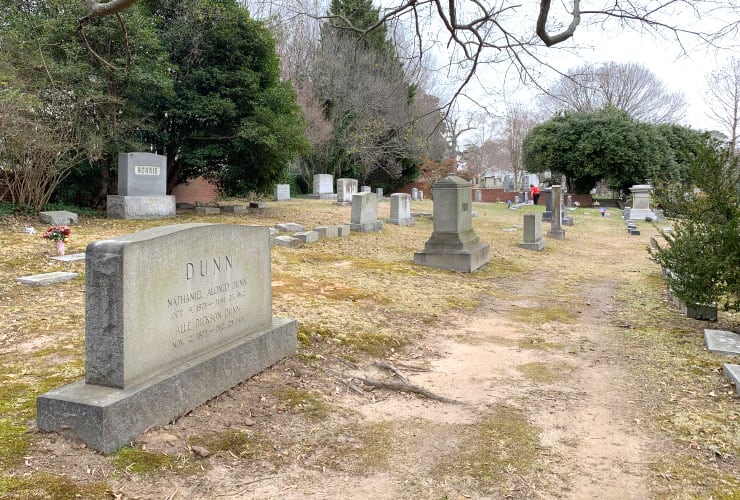
At the far east end of Raleigh’s Historic Oakwood district is the Historic Oakwood Cemetery is the final resting place for over 22,000 of the area’s citizens. The 72-acre (29 ha) property, chartered in 1869, has over 3 miles (4.8 km) of paved pathways covering 40 individual sections including memorials, a visitor center and a mausoleum. The cemetery is proud of its heritage and inclusiveness over the past 150 years in never denying anyone a place regardless of their race, religion, or national origin.
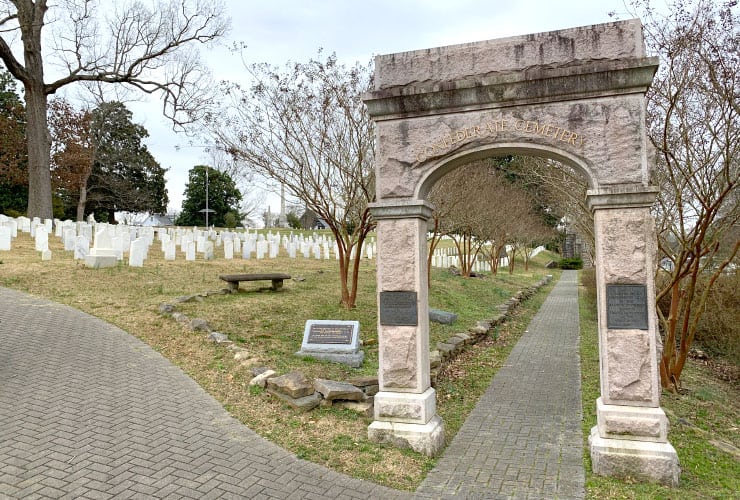
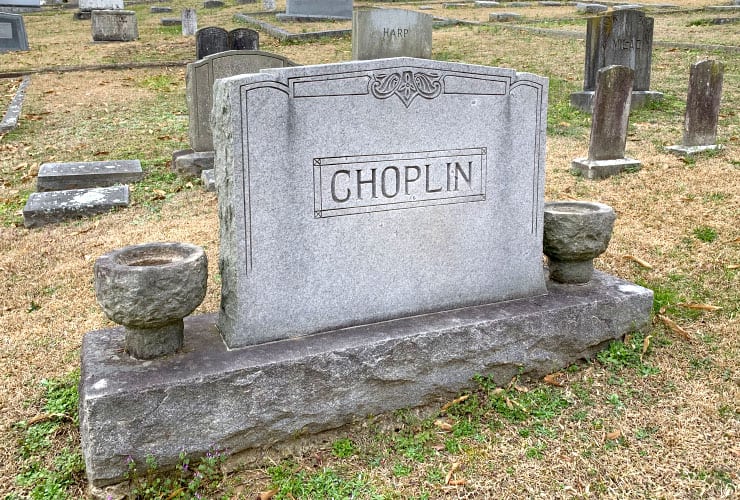
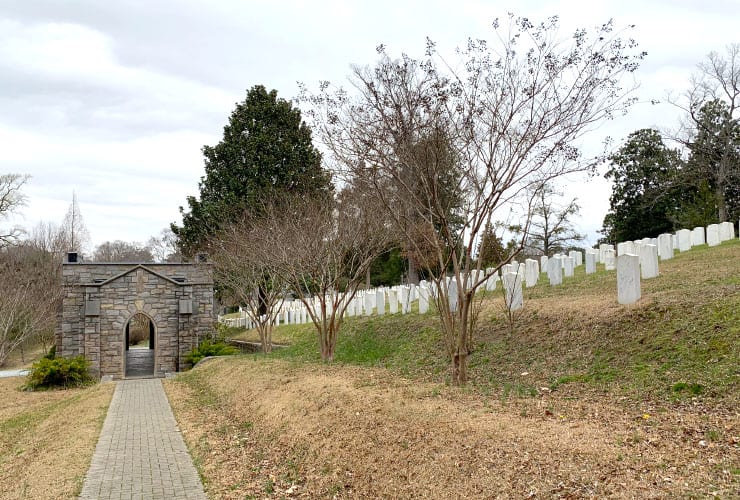
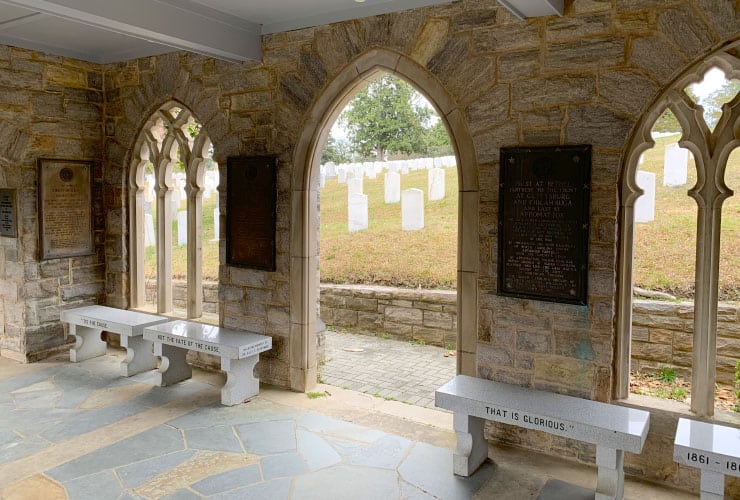
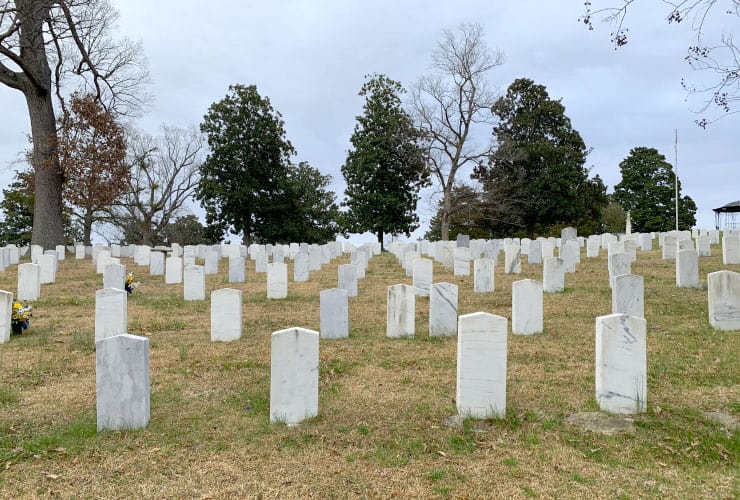
One of the more visited sections is the Confederate Cemetery, built in 1867 and the resting place of over 1,500 Confederate soldiers. At its base is the magnificent House of Memory, which honors not only the Civil War soldiers, but all North Carolina Servicemen and women who have served. The majority of soldiers were buried elsewhere (primarily from Rock Quarry Cemetery, Gettysburg and Arlington) and, over the course of several weeks were transported during a massive undertaking involving the cemetery committee and numerous local volunteers, many of whom served with their fallen comrades.
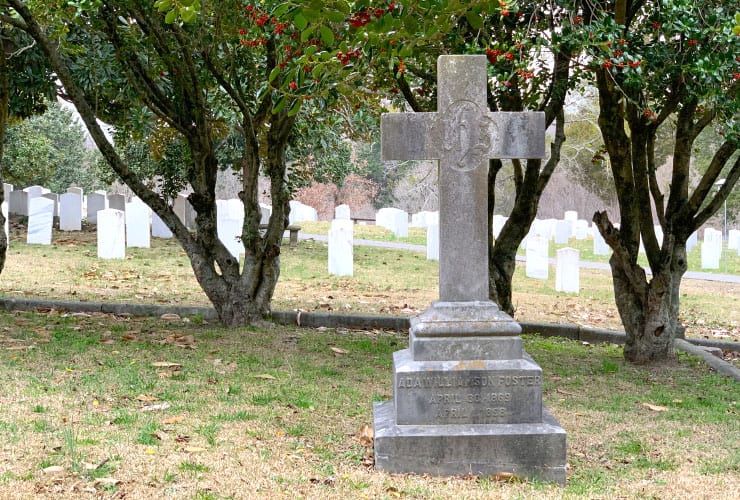
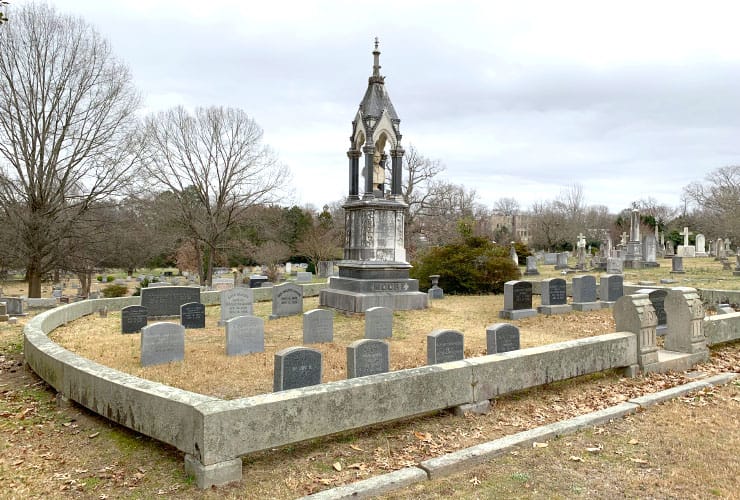
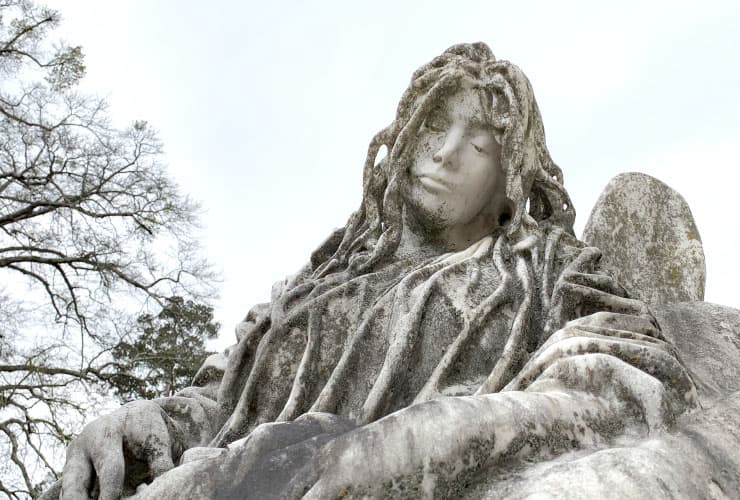
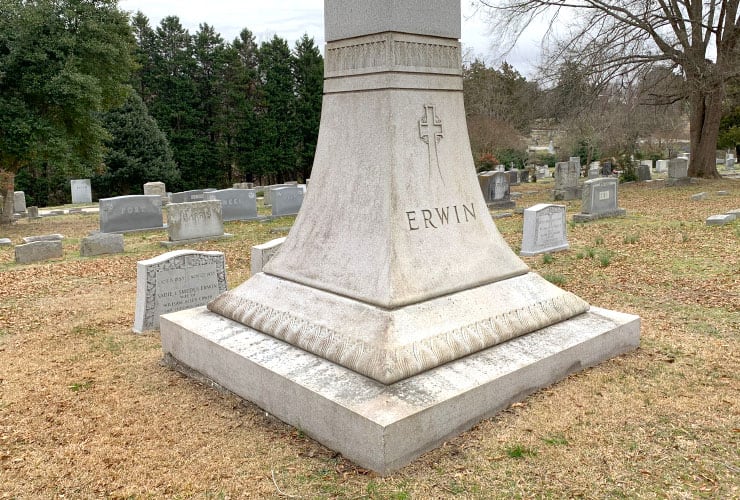
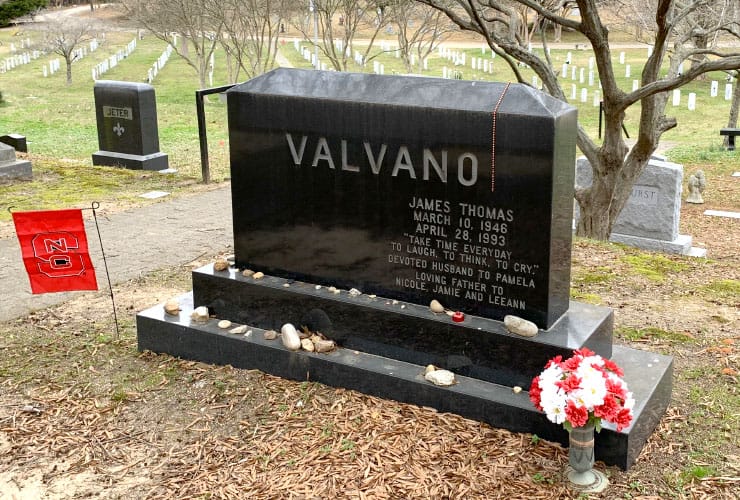
The cemetery has, over the years become a place where many notable individuals have been laid to rest. Some have simple headstones, some are in family plots and others have adorned commemorations in their honor. In all the Oakwood Cemetery there are four Civil War generals, two Secretaries of the United States Navy, numerous Raleigh mayors, eight Supreme Court Chief Justices of North Carolina, five United States Senators, seven Governors and NCAA basketball winning coach, Jim Valvano.

Even if you’re not interested in history or architecture, Raleigh’s Historic Oakwood district is a safe place to take an afternoon’s stroll and absorb the charm of an old southern city. If you share our love of history and art the North Carolina Museum of History and Museum of Natural Sciences are just a 20 minute walk southwest of the Mordecai Historical Park while the Museum of Art is only an 11 minute drive west.
Do you have a favorite section of your hometown? Please tell us about it!

